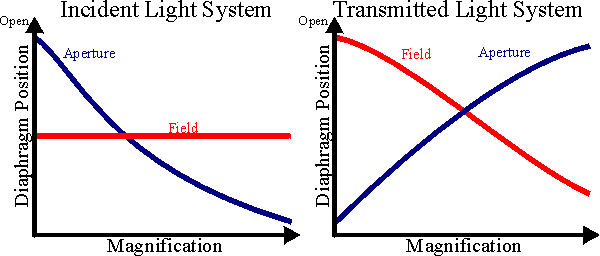Optimized Transillumination
in the Microscope
"Correct illumination of the microspecimen is the single most
important aspect of critical microscopy and photomicroscopy. Fully 80
percent of all photomicrographs submitted for contests and exhibitions
are rejected because of improper illumination of the microspecimen.
Another 10 percent of the photomicrographs reflect improperly adjusted
aperture diaphragms". [Photography through the Microscope, Eastman
Kodak Company, 1988, Ninth Edition]
Dr. August Köhler published a paper in 1893 that described a method
to obtain the highest intensity of even illumination from a
nonhomogeneous source. Applying the "Köhler" method requires
the control of 2 iris diaphragms in the light path: the Field and the
Aperture. The Field eliminates all stray light by restricting
illumination to the actual area under observation. The Aperture controls
the cone of light transilluminating the sample so it fills the aperture
of the microscope objective, thus optimizing depth of focus and image
contrast.

The relationship of diaphragm position and objective lens
magnification can be seen above. In an incident light system, the light
is directed to the back of the objective lenses. In the transmitted
light system, the light is directed to a substage condenser lens with a
numerical aperture that approximates the highest numerical aperture of
the objective lenses. The substage condensor is automatically lowered to
expand the illumination field when low numerical aperture objective
lenses are in use. The entire assembly is motorized to provide remote
focus capability. The PC-Scope is calibrated to adjust the diaphragms to
their proper settings automatically as a function of objective lens
selection.
|
